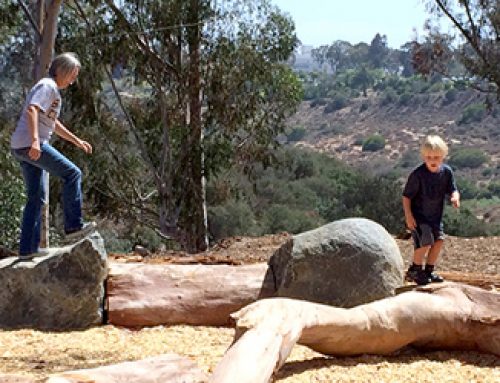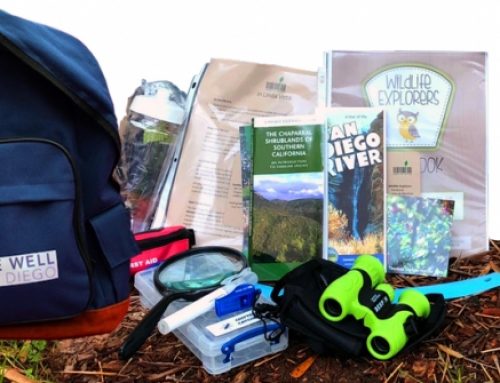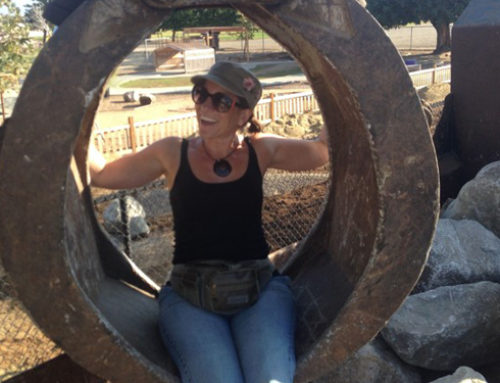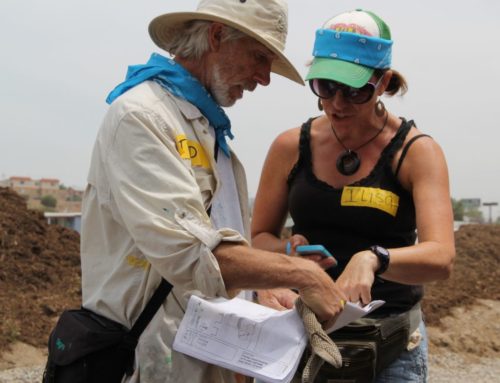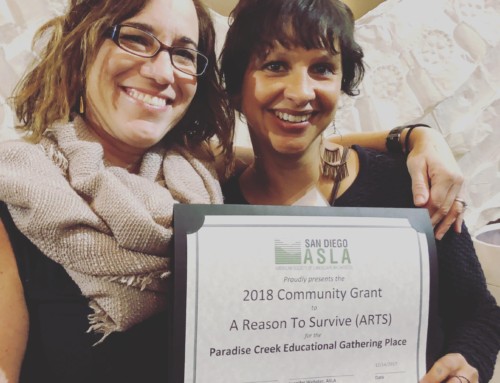September 25, 2018, “The Field”
Recently, the ASLA Children’s Outdoor Environments Professional Practice Network (PPN)’s Online Learning Coordinator, Principal Ilisa Goldman, PLA, MLA, ASLA, Founder of Rooted in Place, recorded a podcast: I Made It in San Diego: A Place Maker Builds a Business. It is well worth listening to! For now, we invite you to read an interview with Ilisa, whose work with children and those who are marginalized in the San Diego community is truly making a difference.
How has your passion influenced your practice?
I have held the core values of stewardship, social equity, and environmentalism since my teen years. If you had asked me twenty years ago what I would be doing now, I think my answer would have been very similar to the work I do today: fostering community and connecting people to the natural world.
I was introduced to landscape architecture during my senior year at Rollins College. Majoring in environmental studies, I learned environmental issues from cultural, economic, and science based perspectives. During graduate school at North Carolina State University, I sought out classes, mentors, and projects that allowed me to focus my passions. From studying permaculture to the design of children’s environments, I saw the importance of taking an integrated approach to design. Beginning practice in 2002, I looked for meaningful and interesting work. I am grateful to have worked for Spurlock Landscape Architects (formerly Spurlock Poirier Landscape Architects). During this time, I was encouraged to bring my knowledge to the table, explore my ideas, and grow as designer, all while learning the realities of landscape architecture and running a practice.
Between 2009 and 2012, while raising my two young daughters, I began volunteering at San Diego Children and Nature, teaching at the NewSchool of Architecture & Design, and training in the Pomegranate Method for Creative Collaboration. These experiences showed me how small scale, community-oriented projects were critical in improving the quality of educational and community spaces.
I started Rooted In Place Landscape Architecture and Consulting in 2012 to take on these sorts of projects. I was fortunate to have amazing clients who believed in the work I aspired to. I was able to get several early childhood and community build projects on the ground. I take a unique approach to all of our projects through a holistic community engagement and place making process. Each project responds to its own distinctive sense of place (ecology, culture, history) and its users. Recently I have been focusing my work on the role of the built environment in public health in terms of how it can impact social-emotional, mental, physical, and even spiritual health.
How do you find work?
Most of our work is through word of mouth. We encourage potential clients to check out our projects. Most come to us not just for the design, but for the process. Some clients will attend one of our Pomegranate trainings and then bring us on to assist in their community projects. Recently we have been partnering with other landscape architecture and design firms on teams for larger projects to help engage communities in the design of healthy outdoor environments for people of all ages and abilities.
How has your work influenced your world view?
With my experience in facilitation and working within tense communities, I realized how important communication is in building consensus. If we cannot find common ground with our ideas or inspirations, how can peace happen? Also, I believe in the power of community in underserved neighborhoods. I have become increasingly aware of how environmental justice is often denied to the disenfranchised. Lacking buy-in and support from city officials, important public health projects cannot get done. Conversely, in communities with dedicated officials or influential constituents, there is greater success with funding and implementing community based projects. Working with communities on the margins in the design process, we are able to help them organize and work together to effect positive changes and to be heard.
In my mind, the designed environment and public health are interconnected and support social equity and ecological health. It is not just about big parks or destinations, but the importance of our everyday spaces in maintaining a high quality of life.
Has your design work impacted the way that your children experience nature?
At schools, at home, and in neighborhood spaces, our work seeks to bring nature into the daily lives of children. From the time my children were infants, I used our front and backyards as a testing ground for nature play opportunities. My children are the first to test a site and give feedback. I intently observe them in action “play” and note where they first run to, how long their attention is maintained, how they play, and how spaces hold up over time. Between school, work, and activities, I see the potential that nature has to calm emotions and forge lasting experiences within our busy family’s lives.
How do you connect with your end users?
The end users are integral in our design process. The design evolves from their needs, ideas, and inspirations. We just help to facilitate and put form to function in an aesthetic and environmentally responsible manner.
What types of research and evaluations have been done on your projects?
We would like to get more into outcomes research and evaluation of our projects but have not gotten there yet. Typically there has not been funding allocated for this. Ideally we would love to connect to a university to evaluate our projects and programs. That said, one project was evaluated in a document called Gathering, written by William Cleveland.
Do you have any advice for landscape architects seeking to expand their work into the social justice realm?
Make contacts! When interviewing for a job, ask what type of community work the firm does or if they do a percentage of pro bono work. If you have your own company, start small taking on small, manageable pro bono projects or offer to volunteer your time on a community project.
I am very grateful for where I am today, but it has not been without bumps and struggles. A majority of our clients are community-oriented and/or educational non-profits. These organizations are often in underserved communities and grant-funded, maximizing each dollar. Being dependent on grants and fundraising for projects has been challenging to maintain a steady revenue stream and bring in enough profit to sustain Rooted In Place. We have explored various organizational structures from non-profit to social enterprise models to determine what the best fit for Rooted In Place. To be sustainable and support ourselves, we need to bring in enough revenue, which can be in tension with maintaining our accessibility to organizations who need us most.
View the article online here:
https://thefield.asla.org/2018/09/25/ppn-interview-ilisa-goldman-asla/


